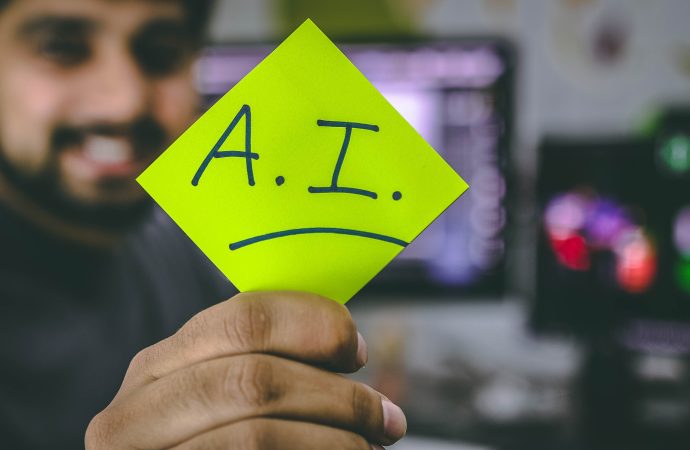Introduction Artificial Intelligence (AI) is quickly becoming an integral part of our lives, from chatbots to self-driving cars and beyond. AI is deployed across many different industries and has the potential to revolutionize how we work, communicate, and live. But who are the key players in AI deployment? In this article, we’ll take a look
Introduction
Artificial Intelligence (AI) is quickly becoming an integral part of our lives, from chatbots to self-driving cars and beyond. AI is deployed across many different industries and has the potential to revolutionize how we work, communicate, and live. But who are the key players in AI deployment? In this article, we’ll take a look at some of the key decision makers and facilitators for deploying AI in your organization or industry. We’ll also discuss what roles they typically play, and how their decisions influence the outcome of any AI project.
The Key Players in AI Deployment
The first step in AI deployment is identifying the key decision makers and facilitators within an organization. These are the individuals who will be responsible for making sure the project is completed successfully and on time.
The decision makers are typically senior executives or managers who have the authority to allocate resources and make final decisions. The facilitators are typically middle managers or technical experts who have the knowledge and expertise to help plan and implement the project.
Both groups need to work together closely to ensure that the AI deployment is successful. The decision makers need to provide clear objectives and goals for the project, while the facilitators need to ensure that these goals are achievable and that the necessary resources are available.
1. The Board of Directors
The Board of Directors is the primary decision-making body for most organizations. In many cases, the Board sets the strategic direction for the organization and is responsible for its overall performance. The Board of Directors is typically made up of a group of people with diverse backgrounds and perspectives who are elected or appointed to represent shareholders.
In organizations that deploy AI, the Board of Directors plays a critical role in setting the overall direction for the use of AI and ensuring that it aligns with the organization’s mission and values. The Board is also responsible for monitoring AI deployment and assessing risks associated with its use.
2. The CEO
As the head of a company, the CEO is responsible for making decisions that will guide the direction of the business. When it comes to AI deployment, the CEO must decide whether or not to invest in the technology and how it will be used within the company. They must also consider the risks and benefits associated with AI implementation.
The CEO is not solely responsible for AI deployment decisions; they must work closely with other key players, such as the Chief Information Officer (CIO) and Chief Technology Officer (CTO). Together, they will create a strategy for how AI can be integrated into the company in a way that best suits its needs and goals.
It is important to note that AI is not a one-size-fits-all solution. Every business is different, and each will need to tailor their AI implementation accordingly. The CEO should consult with experts and advisors to ensure that they are making the best decisions for their company.
3. The CIO
The CIO is the Chief Information Officer, responsible for the overall management of an organization’s information systems. In many organizations, the CIO is also responsible for the development and implementation of AI applications. The CIO must ensure that AI applications are integrated into the existing information system in a way that meets the needs of the organization.
The CIO must also work closely with other key stakeholders, such as the Chief Financial Officer (CFO), to ensure that AI applications are deployed in a way that meets the financial objectives of the organization.
4. The CDO
The CDO, or Chief Data Officer, is responsible for an organization’s data strategy and governance. They work with data scientists and engineers to ensure that data is collected, processed, and stored effectively. The CDO also works with business leaders to make sure that data is used to improve decision-making and drive business results.
How Do They Work Together?
When it comes to AI deployment, there are several key players involved in making it happen. Here’s an overview of the decision makers and facilitators who help make AI a reality:
1. Business Leaders: Business leaders are the ones who ultimately decide whether or not to implement AI within their organization. They’re responsible for understanding the potential benefits and risks of AI and making the strategic decisions necessary to ensure successful implementation.
2. Technology Leaders: Technology leaders play a pivotal role in AI deployment by helping to identify and select the right AI technology for the organization. They also work closely with business leaders to ensure that AI is properly integrated into the company’s existing systems and processes.
3. Data Scientists: Data scientists are responsible for developing and training the algorithms that power AI applications. They work closely with technology leaders to ensure that the algorithms are able to effectively learn from data and make accurate predictions.
4. Operations Teams: Operations teams are responsible for managing the day-to-day implementation of AI within the organization. They work closely with business leaders, technology leaders, and data scientists to ensure thatAI is deployed smoothly and effectively across all departments and functions.
Conclusion
With the ever-growing applications of AI, it is important to recognize who are the key players in AI deployment. This article provided an overview of the decision makers and facilitators that are essential for successfully deploying AI solutions. Understanding their roles can help organizations better plan and manage their own projects, as well as collaborate with other stakeholders to ensure a successful outcome. With this knowledge, businesses can maximize the potential of their AI deployments by leveraging these key players’ resources and expertise.





















Leave a Comment
Your email address will not be published. Required fields are marked with *